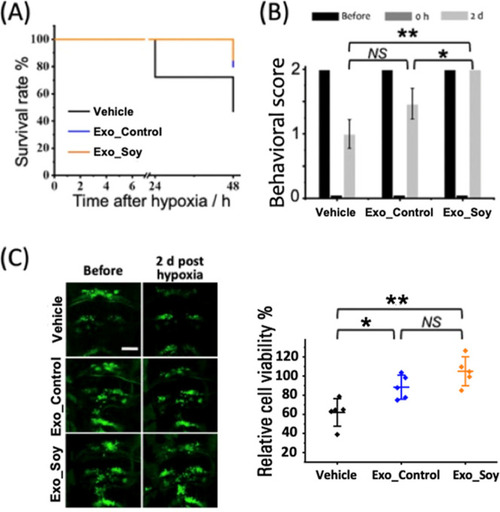Fig. 4
- ID
- ZDB-FIG-250415-53
- Publication
- Lin et al., 2025 - Soy Protein-Cultured Mesenchymal Stem Cell-Secreted Extracellular Vesicles Target the Neurovascular Unit: Insights from a Zebrafish Brain Injury Model
- Other Figures
- All Figure Page
- Back to All Figure Page
|
Therapeutic effect of exosomes on larval survival, neurological function, and cerebral cell viability. (A) Survival curve of zebrafish larvae (6 dpf) treated with vehicle, control exosomes (Exo_Control), or soy-derived exosomes (Exo_Soy) posthypoxia. Data represent n = 60 larvae per group. (B) Behavioral assessment of neurological function, evaluated immediately after hypoxia (0 h) and 2 days posthypoxia (2 d). Data are presented as mean ± SD from three independent experiments with n = 5 larvae per experiment. (C) Left: Representative fluorescence images of cranial motor neurons (green: GFP-labeled) in zebrafish larvae, acquired before and 2 days posthypoxia. Scale bar: 50 μm. Right: Quantification of relative cerebral cell viability at 2 days posthypoxia in the Vehicle, Exo_Control, and Exo_Soy groups. Data are presented as mean ± SD with individual data points (n = 5 per group). |

